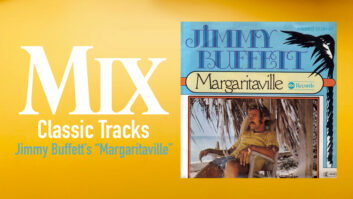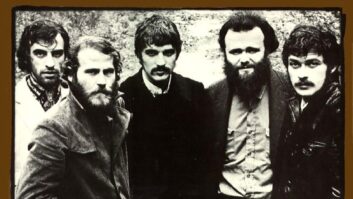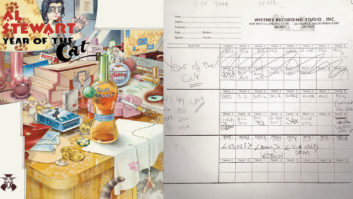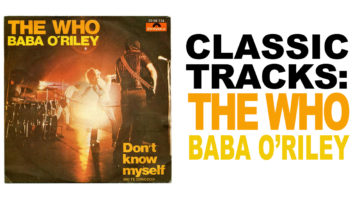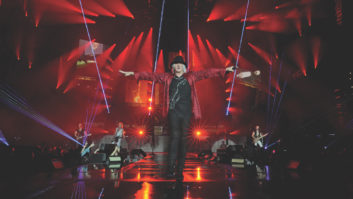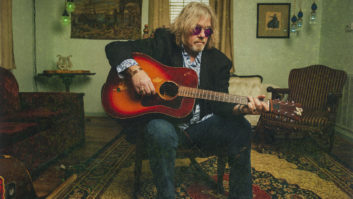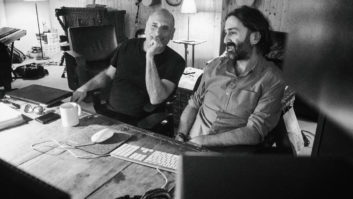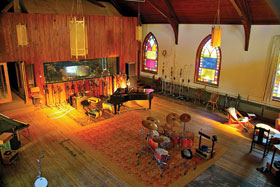
Setup in Dreamland Studios
Engineer/producer/mixer Dave Cook has been working on and off with Graham Parker since the artist made Struck by Lightning in 1991.
“The last couple of albums he made were done on a small budget,” says Cook, whose recording credits also include B-52s, Buckwheat Zydeco and Nick Cave. “He said that this time he wanted to go back to a big studio, and he wanted to cut live. So we said, let’s go back to Dreamland [Hurley, N.Y.], which is where I used to be chief engineer and where we recorded and mixed Struck By Lightning. It’s a great place; it closed for a number of years, but it’s back up and running, and it’s one of the few big studios left in this area.
“I think on all except one of the tracks, Graham cut vocals and guitar live in a booth, which was amazing because when you hear it—the fact that he can go in there with the band and cut this stuff live blows me away.”
Dreamland has a large recording room with four side rooms to be used as iso booths. Cook set Parker up in a booth, with sight lines to the other musicians, using a Neumann U67 mic for his vocal and a Neumann SM2 for Parker’s acoustic guitar. Goulding’s kit was in the big room along with bassist Andrew Bodnar, and guitarist Martin Belmont, whose amp was gobo’d off in a corner. Schwarz had his amp with him in his own booth.
Keyboardist Bob Andrews played Hammond and piano. “He played the Hammond in the big room with the Leslie gobo’d, and the piano was in another room, fully isolated,” Cook says.
Cook miked Belmont’s and Schwarz’s guitar amps with the same type of mics, but placement varied: “Brinsley likes to hear the distance between the amps and the microphones,” the engineer says, “so I made sure that I had at least one mic, an SM57, close to the amp for presence, but I would place a Beyer M160 ribbon about three feet back, and an AKG 414 even farther away. I’d have to play with the phase relationship between the mics, but Pro Tools makes it easy to move things around to be sure there wasn’t any unwanted time shift. For Martin’s guitars, I used a 160 and a 57 close to the speaker cone.”
Cook also notes that he used “standard drum miking,” including U87s on overheads as well as for piano. A Neumann FET 47 and DI were used on bass.
Cook tracked 10 days of sessions to Pro Tools, and “I cut everything with the API [console] preamps, and a couple of outboard compressors here and there. I used Tube-Tech, dbx and Neve compression, but preamps and EQs were all API.
“It’s rare and also loads of fun to go into a studio with a live band and record everyone playing all at once these days,” says Cook, who mixed the album in his personal studio, Area 52 in Saugerties, N.Y. “I would say a good portion of the record is no more than the third take—a couple of tunes are first takes. Graham doesn’t like over-thinking things too much. He wants to capture the initial, fresh energy and I believe we accomplished that.”
Barbara Schultz is a contributing editor to Mix and Electronic Musician, as well as a book editor and reviewer.
